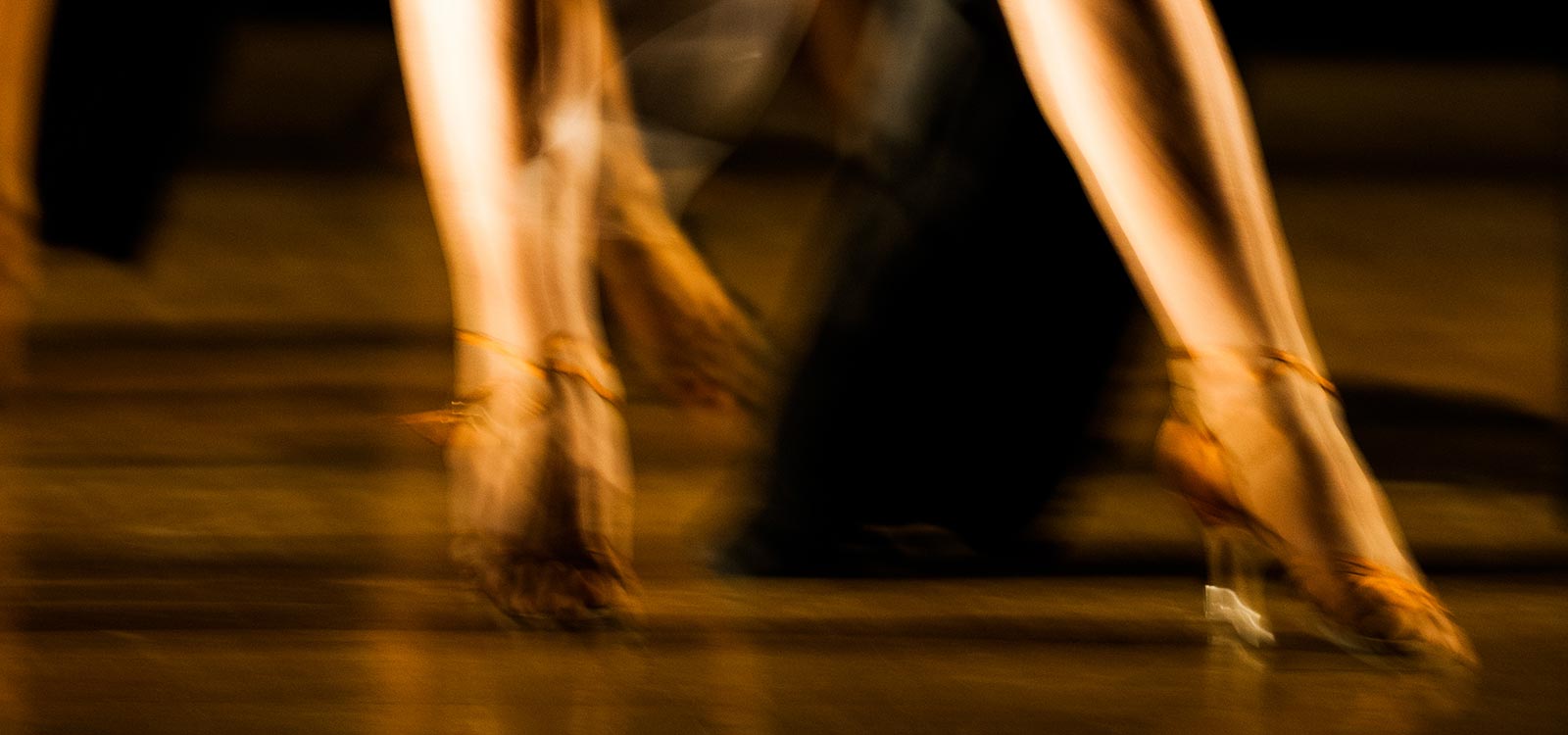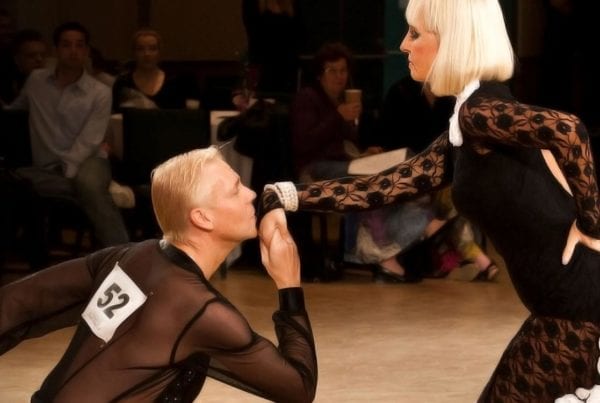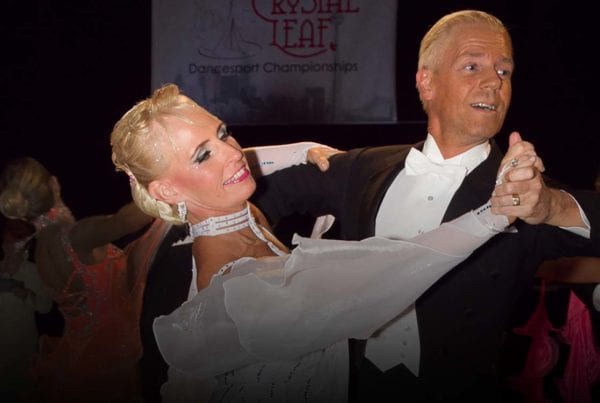The Cha Cha has been with us since around the mid 1930’s and it has changed a lot over the decades, with more hip action and better understanding of the expressive potential of this dance. But there are many ways in which the Cha Cha is being danced improperly.
Dance teachers see a lot of common mistakes in this classic dance. The speed of the dance, combined with the movement people are trying to achieve, leads to errors that we frequently observe even among competitive dancers. Let’s explore some of the most common mistakes in Cha Cha.
Timing problems
Perhaps the most common error we see is how dancers interpret the timing. Chasses consist of three steps danced to two beats of music. A great many people dance the three steps with an even division of the beat, effectively dancing the timing as 2/3, 2/3 and 2/3 of a beat to fit the three steps into two beats. In actual fact, the proper timing for the Cha Cha chasse is 1/2, 1/2 then 1 beat. The side and closing action are half a beat each. The final step has twice as much time!
I first learned about this many years ago as a Silver-level competitor in a lesson with the great Colin James. He opened my eyes to the actual timing and the power of using these beat values properly and my dancing was transformed. With the right timing applied, your Cha Cha has a more sophisticated look that sets even basic steps apart from the crowd.
The proper timing for the chasse in Cha Cha is 1/2, 1/2 then 1 beat
Footwork errors
Another common mistake is in the footwork. Today, with the greater emphasis on speed and size of movement, there is a tendency to dance the chasse as ball-flat, ball, ball-flat footwork. The traditional and correct footwork is ball-flat on every step, including the collection in the center. We understand fully that the modern emphasis on sports movement can make it hard to achieve ball-flat in the center of the chasse, but if you use the timing as described above it is possible to achieve a flat foot as you push away from that foot for the final step, because you have an entire beat for that step.
The danger of using ball-only on the center of the chasse is that your dancing is no longer grounded but instead keeps you dancing “above the floor.” As a result, you won’t have the rich, solid energy into the floor that enables your Cha Cha to look controlled and musical. Social dancers often dance the chasse as ball, ball, ball-flat which keeps the movement even higher and thus bouncy.
Body position mistakes
Social dancers are often unaware of where their body weight is in relation to the foot. This can cause the body to either remain behind where the foot goes, or on back steps they often place their body weight directly over the heel of the back foot. The first mistake is common in side movements and leads to the dancer “chasing the music” because the next beat is already there by the time their body arrives where it should have been on the previous step.
Make sure that you place your body over the foot at the right time on the beat, not arriving after the beat has passed by. The second mistake leads to the body having backwards momentum that makes it difficult to change direction, or can pull the partner off their own feet.
On back steps, make sure that your feet get there ahead of the body and stop the body momentum as your body arrives over the ball of the back foot, thus allowing you to be stable, able to stop on a dime or to change direction very quickly.
Be aware of the size of your steps. Taking steps that are too large for your skill level will keep your body from arriving over the foot at the time of the beat. Keep your steps small to ensure the right body position.
One place where we see the effect of this mistake is in the Hand to Hand, where the front foot lifts off the floor as the dancer steps back because their body weight is too far back. It also affects the Fan position for the lady, causing her to be unable to properly close her feet on the next step because she is already positioned behind the back foot.
Turning too early
In the rush to stay ahead of the fast pace of the Cha Cha music, dancers often begin turns much too early. For example, ladies completing the final turn of the Hockey Stick often begin their turn before their right foot is placed, thus turning the foot sideways instead of forward and making the turn look muddy and unbalanced. The same problem affects the front steps when a lady turns into Fan position, or moving into Spiral turns such as in the Rope Spin.
Turns (and especially Spiral turns) are difficult at this speed, so it’s easy to understand why people want rush them, but starting the turn too early actually makes them harder, not easier. That’s because turning the foot early causes the body to be positioned in between the feet rather than over the foot that you are using to turn. The most efficient way to turn is to be 100% over the standing foot, so waiting to turn allows you to be in a much better position for your balance as you turn. This makes the turn crisper and more efficient, looking better with more control.
In the rush to stay ahead of the fast pace of the Cha Cha music, dancers often begin turns much too early
These are the most common mistakes we encounter as teachers. There are, of course, many other errors that dancers might make, but if you focus on correcting these your Cha Cha will improve dramatically.













